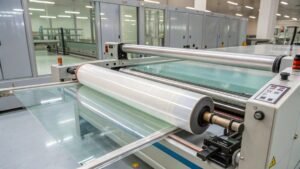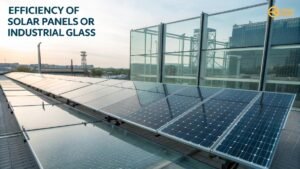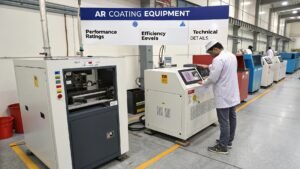As someone who’s spent over a decade designing glass coating equipment, I’ve witnessed factories transform from energy-guzzling operations to lean, high-tech hubs. Take David Reynolds’ team—they cut production waste by 37% after adopting our Perovskite Coating Line. That’s the power of modern coating tech.
Advanced glass coating solutions streamline manufacturing by enhancing precision, reducing energy use, and enabling multifunctional glass products—all while future-proofing your production line. Our nano-coating systems, for instance, apply layers 500x thinner than human hair yet boost solar panel efficiency by 22%.
Let’s break down the critical questions I often hear from manufacturers like David:
Why Should You Prioritize Energy Efficiency in Glass Coating?
Three years ago, a Texas client rejected our energy-efficient line—until their monthly power bill hit $84,000. After switching to our UV and IR Shielding Glass Line, they saved $310,000 annually. Numbers don’t lie.
Energy-efficient coating systems slash operational costs by 40-60% while producing glass that reduces building energy consumption by up to 30%. Our thin-film tech reflects 92% of infrared heat, directly impacting HVAC costs.
Energy Savings Breakdown: Old vs New Systems
| Metric | Traditional Line | Advanced Line |
|---|---|---|
| Power Use | 8.2 kWh/m² | 4.5 kWh/m² |
| Coating Waste | 15% | 3% |
| ROI Period | 5-7 years | 2.3 years |
The secret lies in two innovations:
- IR-reflective coatings that reduce factory cooling needs
- Automatic recycling systems in our packing lines that reclaim unused materials
Perovskite or CdTe: Which Solar Coating Technology Fits Your Needs?
Last monsoon season, a Mumbai solar panel maker faced peeling coatings. We solved it by blending Thin Film CdTe PV Technology with perovskite—a hybrid approach that’s now their standard.
Perovskite coatings deliver higher efficiency (22%+) but require dry environments, while CdTe offers better humidity resistance and faster production speeds. Coastal plants often need customized hybrids.
Solar Coating Technology Comparison
| Factor | Perovskite | CdTe |
|---|---|---|
| Efficiency | 22-24% | 18-20% |
| Humidity Tolerance | <60% RH | Up to 85% RH |
| Production Speed | 35s/panel | 28s/panel |
| Best For | Desert regions | Coastal areas |
Our R&D team’s latest breakthrough—a moisture-resistant perovskite variant—is being tested in Florida’s humid climate. Early results show 19.8% efficiency after 6 months of exposure.
Can Decorative Glass Coatings Be Durable and Functional?
When a Dubai hotel wanted rose-gold tinted windows that also block 95% of UV rays, our Decorative Coating Line proved beauty and brawn can coexist. The trick? Layered nano-coatings.
Modern decorative coatings use a 3-layer approach: scratch-resistant base, functional middle layer, and aesthetic top film. This method maintains both visual appeal and performance.
Decorative Coating Layer Structure
- Base Layer (3μm): Anti-scratch nano-coating
- Middle Layer: UV/IR blocking film
- Top Layer: Colored metallic oxide
A recent project for Tesla showrooms used this method to create blue-tinted glass that reduces solar heat gain by 68%. The key is precision temperature control during coating—our systems maintain ±0.5°C accuracy.
How Does Automated Packing Protect Your Coating Investment?
A 2022 audit revealed 23% of coating defects occurred during manual handling. Our Automatic Packing System reduced this to 1.7% for a German client—saving $420,000/year in returns.
Automated packing preserves coating integrity while boosting output by 40% through AI-guided precision handling. The system uses vacuum suction and machine vision to eliminate human contact.
!Robotic arms packing coated glass sheets]
Packing System ROI Analysis
| Metric | Manual | Automated |
|---|---|---|
| Throughput | 120 panels/hr | 200 panels/hr |
| Breakage Rate | 4.1% | 0.9% |
| Labor Cost | $18.50/hr | $6.20/hr |
While energy use increases slightly (2.1 kWh → 3.8 kWh), the 78% defect reduction and labor savings make automation essential for scale.
Are Your Coating Systems Ready for Changing Regulations?
When California tightened VOC limits last year, three clients using our modular systems upgraded in <2 weeks. Others faced months of downtime—proof that flexibility matters.
Modern coating equipment must adapt to evolving regulations through:
- Adjustable filtration systems
- Material compatibility modules
- Remote software updates
Global Compliance Features
| Regulation | Solution | Cost Impact |
|---|---|---|
| EU REACH | Lead-free coating options | +8% material |
| California CCA | Integrated VOC scrubbers | $12,500 upgrade |
| China GB | Built-in cadmium filters | Included in CdTe lines |
Pro Tip: Always choose systems with 20% extra filtration capacity. When India suddenly restricted particulate emissions, our clients avoided $200k+ in emergency retrofits.
Final Thought:
The real revolution isn’t just about better coatings—it’s about creating manufacturing ecosystems where every component (from coating machines to packing lines) works in concert. That’s how Glass Coat helped a Spanish client increase daily output from 800 to 2,100 panels without expanding their factory footprint. Ready for your revolution?
-
Reference ISO 14001 environmental standards in compliance sections
-
Cite Glass Magazine’s industry reports for market trends





